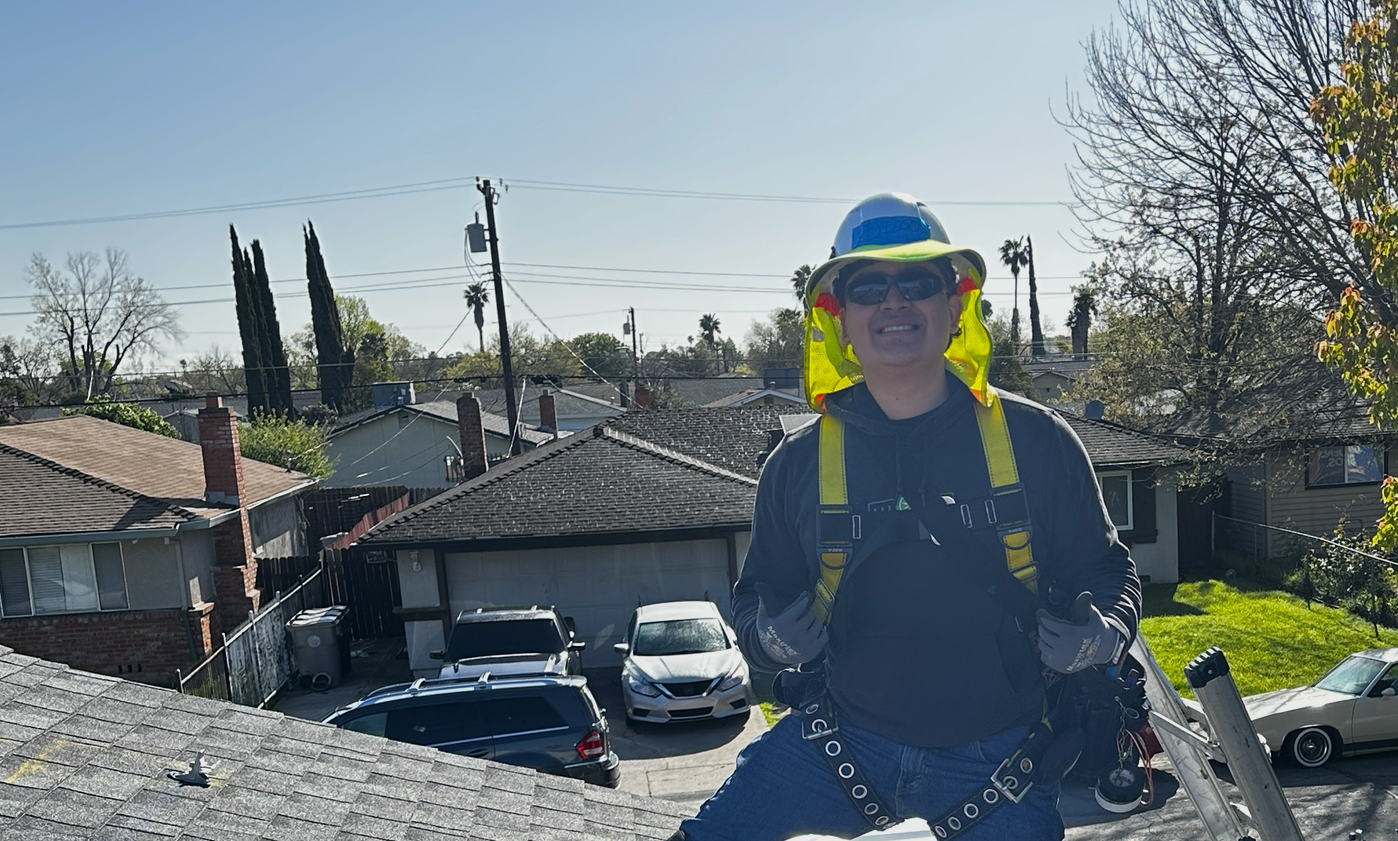Solar installation basics training program provides a professional springboard
BACKGROUND
This profile explores how TCC-funded job training in the residential solar sector has helped Stockton residents, specifically those with no previous work experience, kickstart their professional journeys. The case study highlights DeSahwn Moore and Diego Puello-Soto, who both completed GRID Alternatives’ Solar Installation Basics Training program and, by the end of it, gained new skills and an appetite for more advanced learning in the solar sector. For more on this job training program, as well as Stockton Rising’s broader Workforce Development and Economic Opportunities Plan, click here.
The interviews for this story were conducted in November and December 2024.
DESAHWN MOORE, a lifelong Stockton resident, is at the beginning of launching her career. With no previous job experience, Moore found that breaking into the working world was a major challenge, as most employers want candidates with relevant skills. So when Moore received an email about GRID Alternatives’ Solar Installation Basics Training program, which requires no previous work experience, her interest was piqued.
I figured I can get some job skills because I have no kind of training whatsoever, and I have no history of working. So I figured that the training would help me out in my career, and that was my intention for going to sign up for it.
I learned how to maintain weatherproofing and water shielding integrity. I learned how to bend pipes, manage wires, and run conduit. My time was invested greatly. I loved it.
Over 30 days, the GRID Alternatives program provides trainees with 40 hours of classroom learning and 96 hours of on-the-job training in residential solar photovoltaic system installation and maintenance. Graduates learn how solar photovoltaic panels work as well as gain technical skills that have broad application in the construction sector.
Beyond the technical skills, Moore also credited the program with helping her make progress toward a personal goal of hers — overcoming her fear of heights. Since the program is so hands-on, trainees spend much of their time climbing ladders and traversing roofs. These aspects of the training did not come easy for Moore, but in the end, they helped boost her self confidence.
I’m terrified of heights. So, for me, getting on a roof that was the hardest part, but I beat everybody else up there, which was kind of crazy. I loved the physical factors [of the program], they showed me that nothing can stop me if I put my mind to it.
Given that Moore is at the beginning of her career, she’s remaining open to several professional opportunities post-training. She credits the Installation Basics Training program with sparking her interest in a potential career in the solar sector, and she is eager to gain more training before applying to her first position. In her words, “Thirty days [of training] was good, but I would like a little more. I want to learn it all the way down to the nitty gritty.”
DIEGO PUELLO-SOTO was born and raised in Stockton. Much like Desahwn Moore, he is also at the forefront of launching his career. After graduating from high school, Puello-Soto decided to forgo a traditional college education and instead try his hand at construction.
Puello-Soto’s interest in construction began at home, where he has helped his father with a number of renovation projects over the years. Eager to do something educational alongside his son, Puello-Soto’s father enrolled them both in the GRID Alternatives’s Installation Basics Training program after seeing it advertised around the community.
I had a thought about going to college, but I thought I would gain more by working in real life than sitting behind a chair and a table once for another five years … so what caught my attention about the training was the physical labor and getting to be on the roof.
The training proved fruitful for Puello-Soto. Like Moore, he learned the basics about the operational aspects of solar photovoltaic power systems, gained new skills that are broadly useful in the construction sector, and walked out of the training with some basic work experience that he can put on his resume.
Puello-Soto especially enjoyed the physical aspects of the training. In his words, “It’s a really, really fun experience … I loved being up on the roof, with the nice breeze here and there.”
By the end of the training, Puello-Soto’s interest in a potential career in the solar industry had solidified, and he was eager to gain even more work experience. He subsequently enrolled in GRID’s SolarCorps Fellowship program, an 11-month, full-time apprenticeship opportunity that teaches solar photovoltaic system design, installation, operations, and maintenance.
I learned how solar works, where it comes from, what we use it for … I also learned how to use impact tools, install mounts, dress rail to completion, land the modules, and how to be safe on the roof.
With the knowledge I already have, I want to apply it to building my own solar company, not [a big] company, but a small, little neighborhood [operation].
Once Puello-Soto completes the fellowship program, he hopes to land a job as a construction assistant in the solar industry, and eventually open his own business. Given that enjoys being in the field so much, he’d like to run a relatively small operation, so that he can still be able to do the work himself, and catch that rooftop breeze.
Top page photo:
Students participating in an educational event in March 2022 at the Edible Schoolyard Community Farm in Stockton
Credit: Erin Scott


